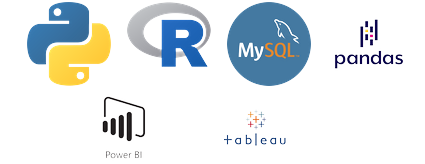Here’s a complete roadmap for Web Development with Python, whether you’re a beginner or looking to level up your skills. The roadmap is structured in phases, moving from fundamentals to advanced topics and deployment.
🔰 Phase 1: Python Fundamentals (1–2 weeks)
- ✅ Variables, Data Types, Operators
- ✅ Control Structures:
if,for,while - ✅ Functions, Modules, and Packages
- ✅ Error Handling
- ✅ File I/O
- ✅ Working with JSON and CSV
Tools & Practice:
- Use Jupyter Notebook or Replit
- Practice on HackerRank, LeetCode
🛠️ Phase 2: Version Control & Environment Setup
- ✅ Git & GitHub basics (init, commit, push, pull)
- ✅ Create and manage Virtual Environments (
venvorvirtualenv) - ✅ Understand
pipandrequirements.txt
🌐 Phase 3: Web Basics
- ✅ How the Web Works (Client/Server, HTTP/HTTPS)
- ✅ HTML, CSS (basic styling), JavaScript (basics)
- ✅ Frontend tools: Bootstrap, jQuery (optional)
Resources:
🧩 Phase 4: Flask (Micro Web Framework)
- ✅ Flask Routing, Templates (Jinja2)
- ✅ Forms, URL Parameters, Static Files
- ✅ Sessions and Cookies
- ✅ Using Flask Blueprints (modular structure)
- ✅ Flask-WTF for form validation
Project Ideas:
- TODO app
- Contact Form
- Blog System
🧱 Phase 5: Django (Full-stack Web Framework)
- ✅ Django Project Structure (Apps, Migrations)
- ✅ Admin Panel Customization
- ✅ Templates, Static Files, Forms
- ✅ ORM (Django Models and Queries)
- ✅ Authentication & Permissions
- ✅ Class-Based Views, REST Framework (DRF)
Project Ideas:
- News Portal
- E-commerce Website
- Job Board
📦 Phase 6: Database Integration
- ✅ SQLite (default), PostgreSQL, MySQL
- ✅ Use SQLAlchemy with Flask
- ✅ Django ORM Mastery
- ✅ Model Relationships (OneToMany, ManyToMany)
🔌 Phase 7: REST APIs & Backend
- ✅ Flask RESTful API
- ✅ Django REST Framework (DRF)
- ✅ CRUD Operations via API
- ✅ Authentication with JWT/OAuth
Tools:
🌍 Phase 8: Frontend Integration
- ✅ Connect frontend (HTML/JS) with Flask/Django backend
- ✅ Use AJAX / Fetch API
- ✅ Optional: Integrate with React/Vue (for advanced UI)
☁️ Phase 9: Deployment
- ✅ Hosting on PythonAnywhere (for Flask)
- ✅ Heroku or Render for small projects
- ✅ Deploy Django on DigitalOcean or AWS (EC2)
- ✅ Docker (basics)
- ✅ Set up NGINX + Gunicorn
🔐 Phase 10: Advanced Concepts
- ✅ WebSockets with Flask-SocketIO / Django Channels
- ✅ Celery for Background Tasks
- ✅ Caching with Redis
- ✅ Unit Testing with
pytest/unittest - ✅ CI/CD (GitHub Actions)
📚 Bonus Tools & Libraries
- Jinja2 – Templating engine
- SQLAlchemy – ORM for Flask
- Django REST Framework – API development
- Flask-Mail / Django Email backend
- Stripe/PayPal API – Payments
- Django AllAuth – Social Login
🧪 Practice Projects (Highly Recommended)
- Blog Website with Comments & Likes
- Task Manager (To-do App)
- Weather App (API integration)
- Student Portal with Admin Dashboard
- E-commerce Store with Cart & Orders
- Hotel Booking System
- Chat App using WebSockets
✅ Final Tip:
Master one framework first (Flask or Django) instead of trying to learn both at once. Django is more full-featured, while Flask offers flexibility.

